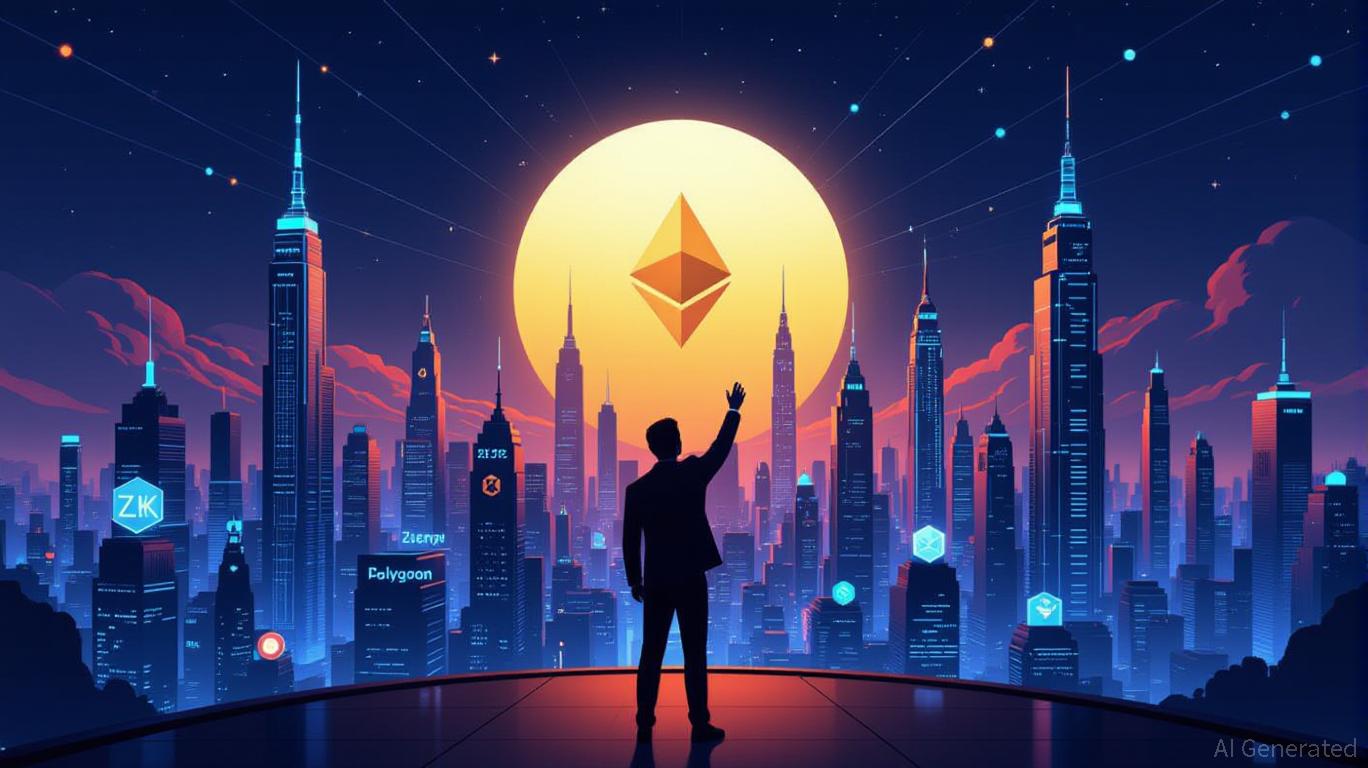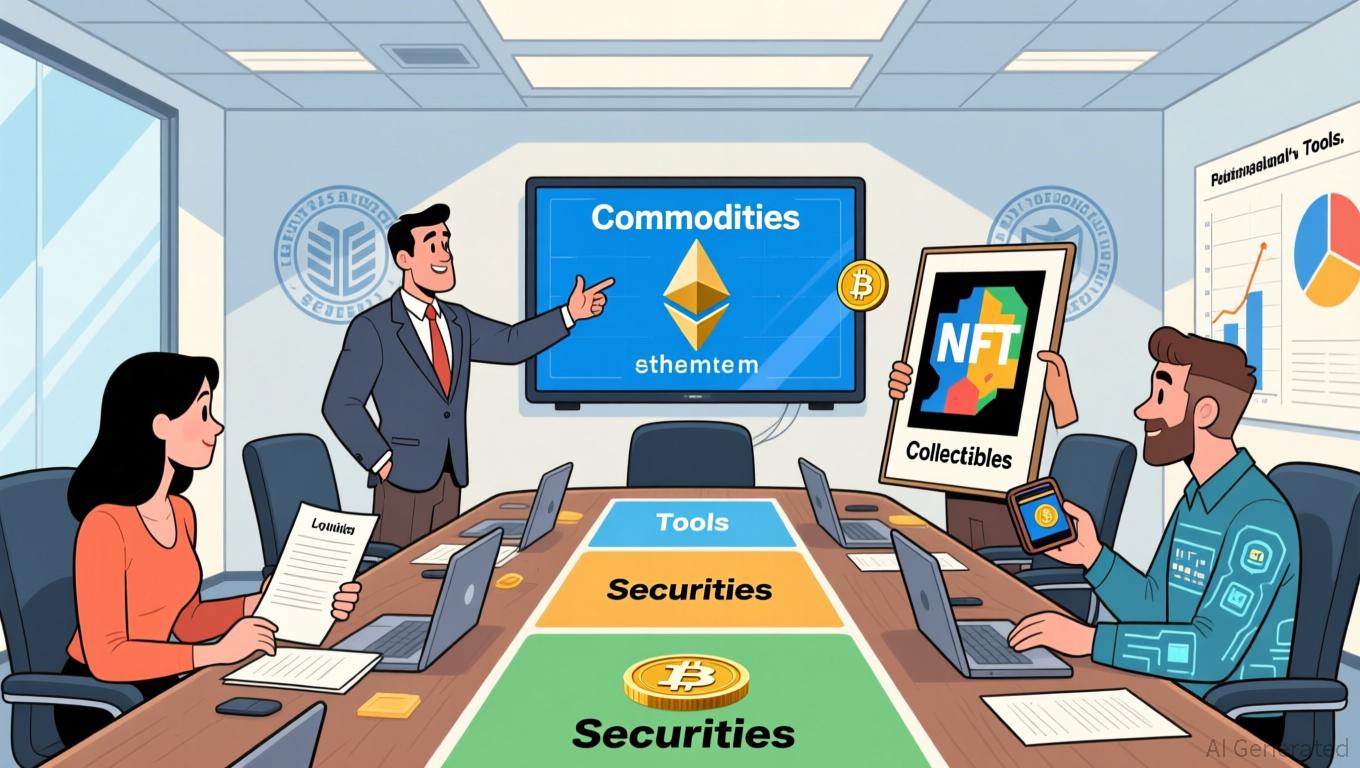Vitalik Buterin’s Latest Support for ZK Technology and What It Means for the Cryptocurrency Industry
- Vitalik Buterin promotes ZK technologies as Ethereum's scalability and privacy solution, accelerating institutional adoption through technical upgrades and partnerships. - ZKsync's 15,000 TPS Atlas upgrade and Polygon's AggLayer framework highlight ZK's role in cross-chain efficiency, with ZKsync's token surging 120% in 2025. - Institutional investments in Succinct Labs ($55M) and Aztec Network ($100M) underscore growing confidence in ZK's ability to solve blockchain's scalability-privacy trilemma. - ZK
Buterin’s Support: Accelerating ZK Integration
Buterin’s advocacy for ZK technology has focused on three main areas: scalability, interoperability, and privacy. In November 2025, he publicly praised ZKsync’s Atlas upgrade, which reached 15,000 transactions per second (TPS) and provided nearly instant finality, describing it as “a significant advancement for Ethereum’s institutional use”
In addition to

ZK Infrastructure: Investment Prospects
The endorsement of ZK technology by an influential figure like Buterin has sparked increased funding and collaborations for leading projects. ZKsync, for example, has seen its token (ZK) rise by 120% since October 2025,
At the same time, Polygon has strengthened its reputation as a ZK frontrunner with its AggLayer framework, which links multiple rollups to boost scalability. Buterin’s recognition of Polygon’s early ZK-EVM work has enhanced its standing, while co-founder Sandeep Nailwal’s charitable efforts through CryptoRelief have broadened its influence
Beyond these major players, Succinct Labs and Aztec Network have become attractive options for investors.
Market Trends and Future Outlook
The ZK Layer 2 sector is expected to expand at a 60.7% annual growth rate,
Nonetheless, there are still obstacles. Regulatory attention on privacy coins and technical difficulties in implementing protocols like GKR (Buterin’s innovation in ZK verification) could hinder progress. Investors should also consider the uncertainties in regulation alongside the long-term promise of ZK infrastructure.
Conclusion: A Crucial Turning Point
Vitalik Buterin’s support has not only legitimized ZK technology but also sped up its adoption within Ethereum’s main development plans. For investors, the priority is to identify projects that cater to institutional requirements—such as ZKsync’s liquidity-sharing features or Succinct Labs’ developer-oriented solutions—while managing regulatory challenges. As the ZK landscape evolves, those who move early are positioned to benefit from a market set for rapid expansion.
Disclaimer: The content of this article solely reflects the author's opinion and does not represent the platform in any capacity. This article is not intended to serve as a reference for making investment decisions.
You may also like
Aave News Update: MiCA Green Light Spurs Aave’s No-Fee On-Ramp, Accelerating Widespread DeFi Integration
- AAVE token gains bullish momentum as on-chain growth and MiCA regulatory approval align for potential $450 price surge. - Technical indicators like TD Sequential signal strong buy opportunities, with $250 breakout likely to trigger renewed uptrend. - Aave becomes first DeFi protocol authorized under MiCA, enabling zero-fee euro-crypto conversions across EEA via GHO stablecoin. - Protocol's $542M daily volume and $22.8B borrowed assets highlight operational growth outpacing undervalued market price. - MiC

XRP News Update: SEC Streamlines Rules, Granting Crypto ETFs a 20-Day Accelerated Approval Process
- SEC introduces 20-day automatic approval for crypto ETFs via updated guidance, accelerating stalled XRP/Solana fund reviews post-government shutdown. - Canary Capital's XRPC ETF generated $58M in volume, intensifying demand for additional crypto ETFs under Project Crypto's regulatory framework. - Backlog filings will be processed in submission order, with post-effective amendments defaulting to approval unless opt-out, reducing market entry delays. - Analysts predict November surge in approvals as SEC mo

Bitcoin Updates: Investors in Crypto Face Panic Amid Stock Market Drop, Bitcoin Falls Under $100K
- US stocks and crypto markets plunged on Nov 15, 2025, with Bitcoin falling below $100K amid extreme investor fear (index at 10) and macroeconomic uncertainty. - Bakkt shares dropped 16% after $23.2M Q3 loss from warrant revaluation, while Grayscale reported 20% revenue decline due to Bitcoin ETF outflows and competition. - DeFi TVL fell sharply across Ethereum/Solana, worsened by $213M in security breaches, as whale activity hinted at Ethereum accumulation ahead of Fusaka upgrade. - Institutional investo

Ethereum Updates: SEC Guidelines Allow Cryptocurrencies to Achieve Commodity Classification
- SEC Chair Paul Atkins proposed a crypto regulatory framework exempting ETH, SOL, and XRP from securities classification using the Howey Test to clarify market roles. - The framework categorizes crypto assets into four groups, allowing tokens to "graduate" from securities to commodities as ecosystems decentralize and utility emerges. - It introduces "super apps" for mixed-asset trading and a six-month compliance grace period, aiming to balance innovation with fraud prevention and reduce regulatory fragmen
